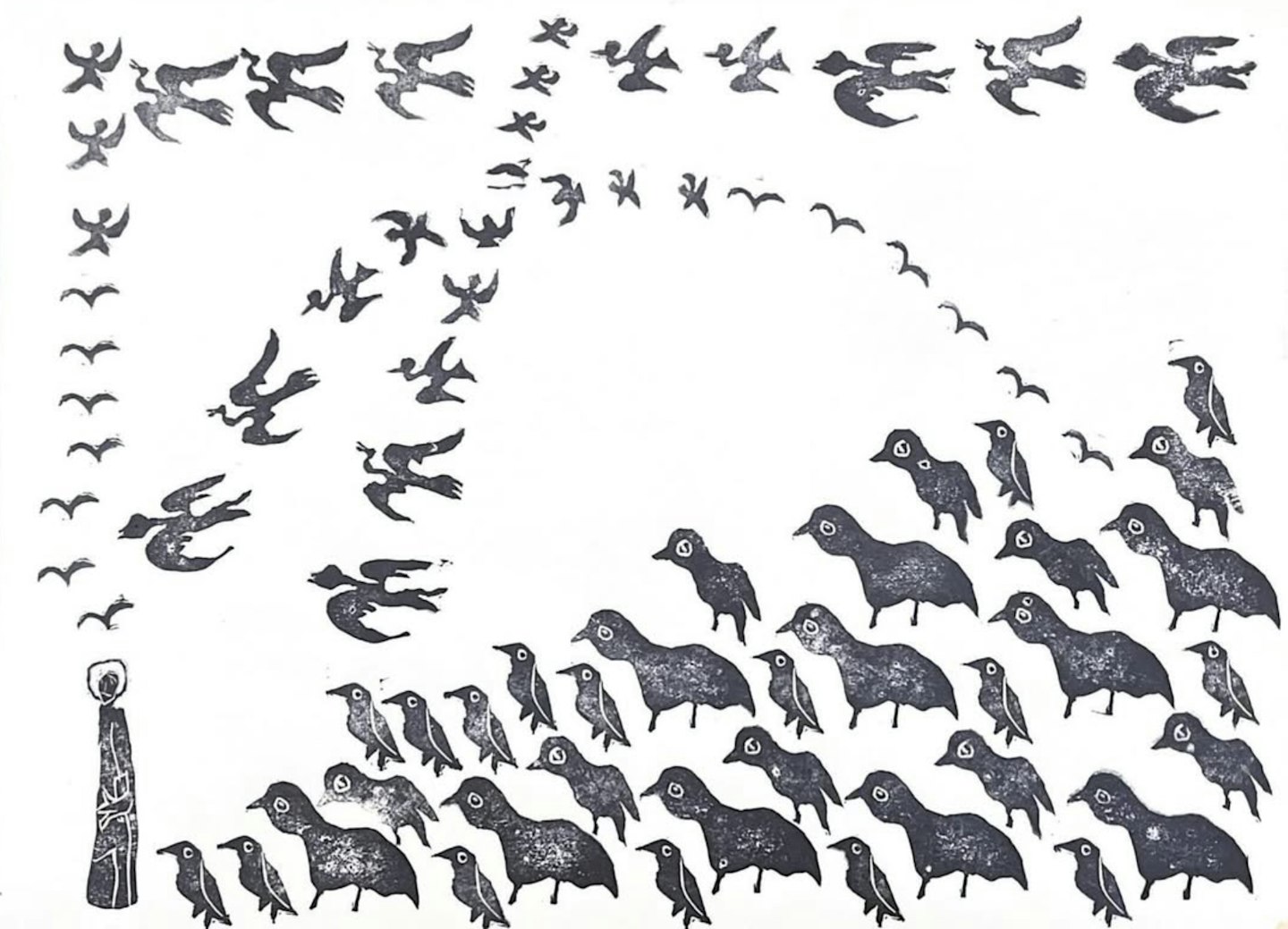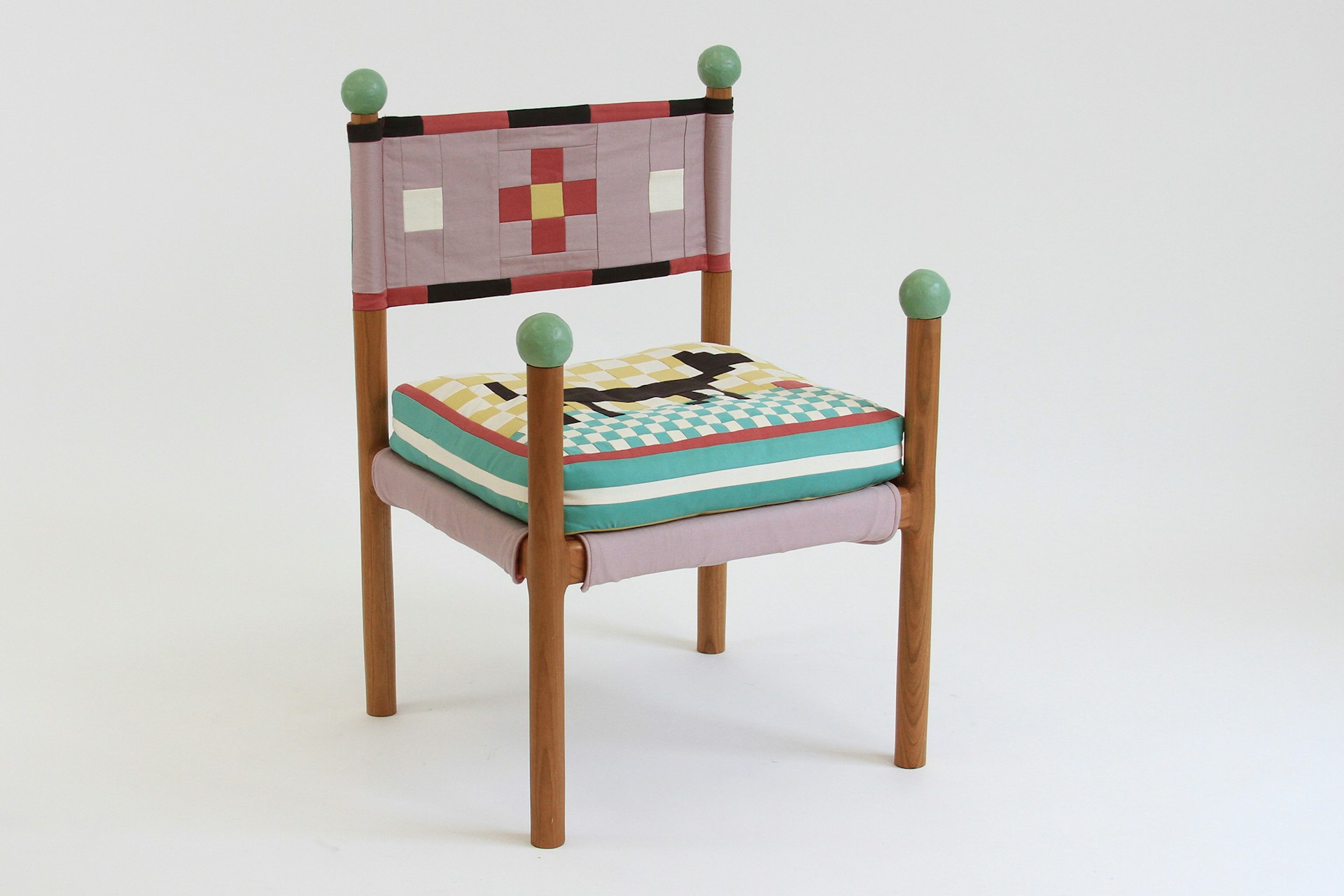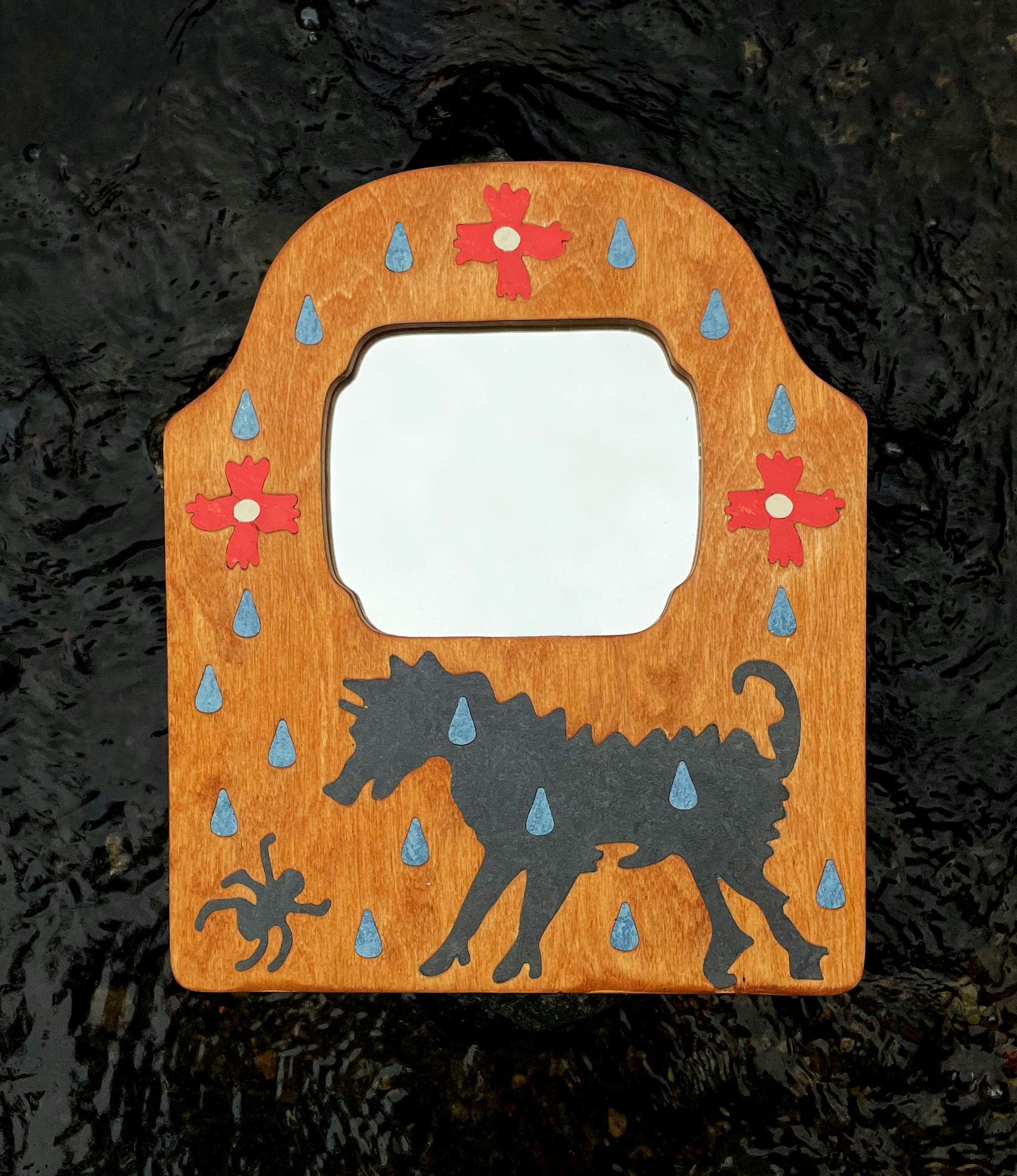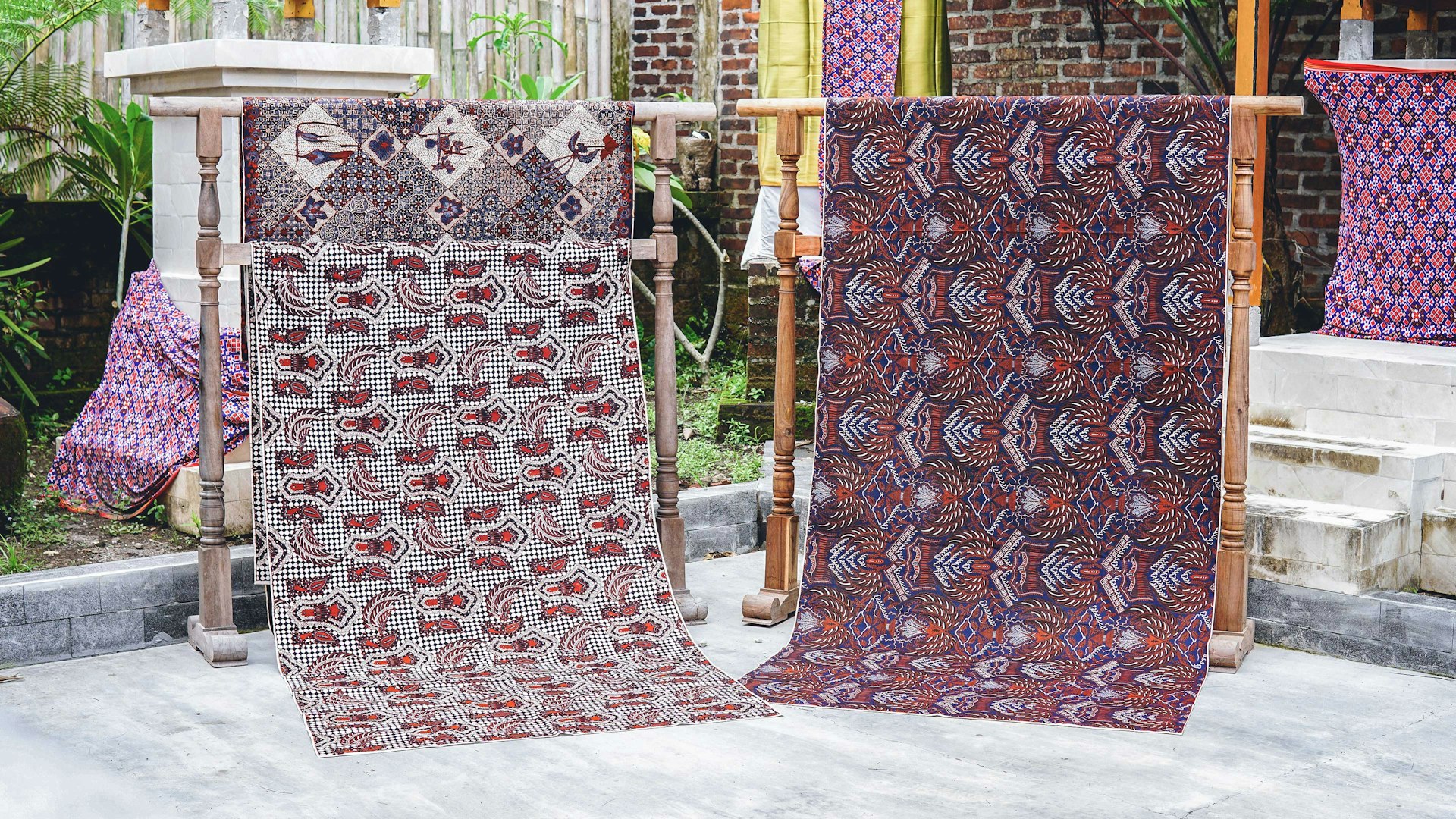October 10, 2025
Farewell and Reflections on My Time Working at VAWAA

By Reilly Blum
“The relationship between thinking and body is so close that what happens in the mind is often described in the language of the hands. …having grasped something mentally is not just a pictorial analogy with physical grasping. .... if the hand can open up, if it doesn't just work, but plays as well, if it perceives, then the mind will open up more freely as well. The hand's plasticity is the plasticity of thought.”
Otl AIcher, Analogous and Digital, 1987
We’ve all seen the stories: the more connected we are, the less connected we become. Smartphones, geopolitics, weather, pandemics, elections, wifi, fear. Attention spans are shrinking, human relationships are being reduced to pixels, and people are finding themselves increasingly online, less and less tethered to physical experiences.
Ok, sure. The digital boom has perpetually altered humanity, and our lives are metered by screens. But the thing is, the pendulum always swings. It doesn’t take much to remember humanity has so much more to offer than that. Inevitably, we react to the intangibility of modern life, and once again we value tactility and the human hand. Craft becomes essential.
When I joined the VAWAA team two years ago, I had already come to many of these conclusions myself. I had a bachelors degree in furniture design, was (and am) a practicing artist, had travelled around the continental U.S. conducting research into textiles and folk art, and was more comfortable with a chisel and mallet than with a computer mouse. I grew up sewing and quilting, two very patient crafts that engaged both my mind and hands. From a young age, I knew: there was magic there.
A chair I made while studying Furniture Design at the Rhode Island School of Design: cherry wood and patchworked upholstery.
After finishing school, I floundered, as many young people do, trying out different things and types of working environments. There were (and are) many sides to me. There’s the free-spirited creative, the product designer, and the philomorph. I don’t like to be bored. And I didn’t want to spend my working hours in an amoral void, contributing to the calcification of the late-capitalist machine. Those criteria alone were enough to rule out many of the most lucrative career options readily available to me. So, I was lucky one evening to come across a job posting for VAWAA. I applied instantly, and received a message from VAWAA founder Geetika within minutes. From that point on, my life changed.
VAWAA’s mission was seductive. A global community of master artists committed to sharing their craft? Sign me up. I had been looking for a place to direct my creativity and curiosity about the world, and my role at VAWAA seemed like it was made for me: it required research, design thinking, organization, and that elusive combination of arts, creativity, and an operations brain. I could see that this role would play to my strengths while challenging me to develop some of the communications skills my design education might not have reinforced.
Over the past two years, I worked with the team to launch over 70 new artists on the site, expanding our curation focus to several new countries and regions. Our online community grew by more than 5,000 new members, and we had the pleasure and privilege of partnering with organizations like American Craft. We streamlined the way we curated artists, scrubbed the farthest corners of the internet to find makers operating at the highest levels, and introduced new features to the website, always seeking to find the happy medium between the physical and the digital.
There’s a paradox in the way we work: the VAWAA team remains fully remote, and many of us never met in person. Yet we were and are bound to a mission centered on tactility, the type of knowledge-share and intangible spiritual growth that can only be nurtured when people connect together, in person. It takes an incredible amount of focus, commitment, and flexibility to overcome the impersonality of the digital sphere, but in a way, this is a byproduct of the weekly rhythm behind the scenes.
Each week, our team met for a curation call, where we shared our top picks for new VAWAA artists. We debated the nuances of everything from clay firing temperatures, yarn compositions, and paper types to sustainability, ease of travel, and the history of particular regions. Along the way, we discussed the cultural and social contexts for an expansive breadth of crafts ranging from Mayan backstrap loom weaving in the birthplace of the Zapatista movement, to the Sicilian Opera dei Pupi, to sculptural horsehair weaving in Santiago.
During these curation calls, we often found ourselves in disagreement. Some crafts are too niche, others too widespread. Some artists have beautiful work but have a practice too commercial to be a good fit, and others are still developing their practices, not quite ready to teach. From my first days at VAWAA, I was encouraged by Geetika and the rest of the team to voice my opinions, even when they were at odds with everyone else’s. Sometimes I would vouch for a particular artist or craft where I saw potential, even when no one else did.
Broom-making, for example, was a craft where I, as a furniture and wood nerd, saw a space for people to apply woodworking skills in a practical way. Geetika and our teammate Kris weren’t convinced. But after nearly two years of discussion, an incredible Appalachian broom-maker, Brenda, joined the VAWAA community. Her hand-tied brooms, ranging from small whisks to large porch brooms “sturdy enough to shoo away a bear,” reflect a centuries-old tradition of broom-making in Southern Appalachia. Having grown up spending time with family in the Western North Carolina mountains, and visiting the Folk Art Center on the Blue Ridge Parkway near Asheville, I had a personal tie to the region’s craft legacy. It was special for me to see this oft-overlooked craft of Appalachian broom-making represented on a global platform. And in researching broommakers around the world, I learned so much about the artisans in my own backyard.
Even when our team had differing viewpoints, I could always step back and recognize how lucky I was to be debating the nuances of wood species and yarn. Embedded within these conversations was an implicit trust in my voice from the rest of the VAWAA team, which helped me to develop a more refined vocabulary for craft, build confidence as a researcher and curator, and recognize that the trends I perceived were of value. This experience also made me a more informed global citizen, as I steadily gained a greater global perspective and understanding of the relationships between different cultures through the lens of craft.
In the background, I was working on my own projects, too. I designed and built a collection of mirrors with inlaid designs combining classic woodworking techniques with digital fabrication and 3D modeling. Working with VAWAA felt like a positive knowledge loop: my research and curation for the VAWAA team fed my own artistic practice, and the work I produced in my studio on the side helped keep my eye for craft sharp. Having experience with materials and as a maker made me a more discerning curator. I was both hungry and full.
Boar vs. Spider Mirror, one of several mirrors featuring linoleum inlay I made while working for VAWAA.
One of the highlights of my time with VAWAA was collaborating with master batik maker Sang Made and his colleague Giri, two of the kindest and most generous partners we could have imagined. When I first reached out to Sang Made in 2023, he was busy creating batiks for the royal wedding in his home country of Indonesia, waking earlier than I could imagine to travel for several hours by scooter from his home in the mountains to artisan villages each day. His commitment to his craft and the local networks he nurtured was remarkable. We stayed in touch through the months until he’d finished preparing for the wedding and was ready to partner with VAWAA. This experience reflects a common challenge we face when building relationships with highly sought after artists: their skills are in high demand and reach many hands, and while they are keen to share their knowledge, they’re only human, and have a limit to what they can reasonably take on.
Sang Made was well worth the wait. His VAWAA encompassed three distinct batik techniques from different villages, immersion into Yogyakarta’s contemporary art scene, and the opportunity to exhibit alongside local artists, and was a life-changing experience for the guests he welcomed into his studio.
Two of Sang Made’s stunning hand-painted batiks.
Sang Made passed away unexpectedly earlier in the spring, leaving behind an incredible textile legacy. His life’s work continues to uplift and expand Indonesian batik traditions, combining a reference for traditional Javanese techniques with a uniquely poetic touch. Even though we never met in person, he had a remarkable humanity that overcame the digital barrier. Artists like Sang Made are at the heart of VAWAA’s mission, to share the stories, wisdom, and perspectives of master artists and ensure that their legacies live on. His life’s work is of immeasurable cultural value and I consider myself lucky to have met him, however briefly, and to have witnessed his passion. Sang Made’s textiles will outlive all of us.
I started this essay by considering the power of craft in a world increasingly fragmented by digital technology. What I’ve learned from working with VAWAA is that craft can do so much more than ground us in the physical realm: it has the power to bridge cultural, geographic, and language boundaries, reminding us all of our shared humanity. As Otl Aicher writes in his 1987 essay, Analogous and Digital, our understanding of human thought is inextricably linked to our relationship with our hands. We “grasp”, “hold on to”, and “turn over” thoughts. It’s no coincidence that these are the same actions we undertake when practicing a craft. “The hand's plasticity is the plasticity of thought.” In other words, the more we open our hands to new experiences, materials, and techniques, the more our minds open up as well. Craft is a cornerstone of humanity, and at VAWAA, we believe that it has the power to foster greater connection between people and cultures.
After more than two incredible years of growth and learning, wrapping up my time at VAWAA is bittersweet. I’m so grateful to have been connected to such an incredible community of artists, and to have learned so much from my lovely colleagues Geetika, Kris, and Nakeia. In the end, VAWAA’s mission of uplifting craft and inspiring connection between people and materials was persuasive—perhaps too persuasive—and I’ve decided to return to my roots as a maker, grounding my work in the physical. I’ll be returning to my first love of sewing, working on a few upholstery projects, and starting a tailoring course in the fall. You can follow my journey on Instagram, or check out my website and portfolio here.
Of course, this isn’t the last Geetika and the rest of the team will be hearing from me. It’s no small coincidence that many of the artists I curated and worked alongside are exactly the type of visionaries I’d love to learn from. There might be a VAWAA in my future…
Until then, I’d like to express my gratitude for such a formative experience at VAWAA, and to each of the artists and individuals who taught me something along the way. Check back soon for the second part of this blog series, where I’ll be sharing some of my insights and reflections about craft at-large, and the niche I see for mission-led organizations like VAWAA.
Written by Reilly Blum
Explore all our curated artist apprenticeships worldwide and book one today.
Subscribe to our weekly newsletter to stay inspired with new artist stories and creative apprenticeships.


